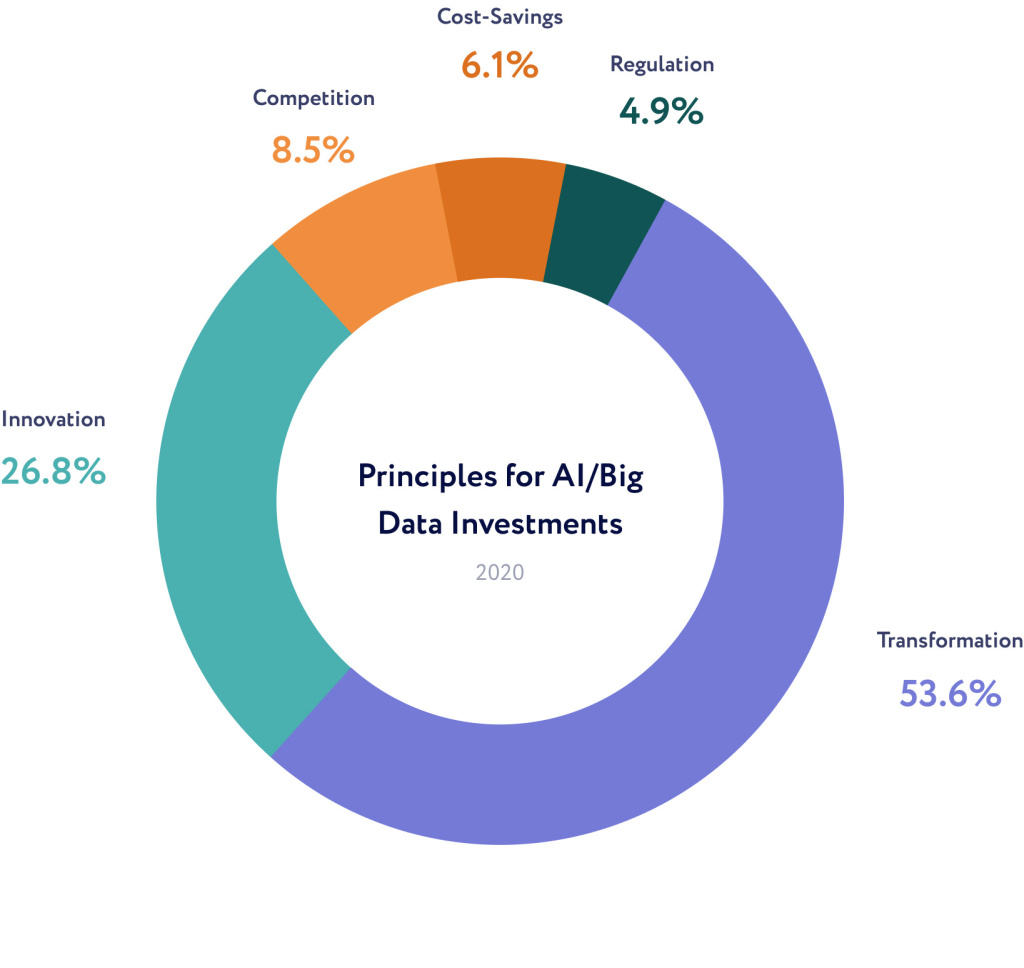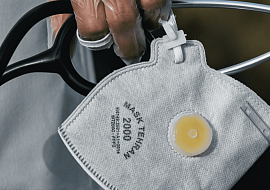IoT & Big Data Solutions: optimizing the company’s resources and expenses
This resulted in significant growth of solutions in the field of Big Data Analytics: from 2019 to 2022 the worldwide revenue of analytics solutions has increased by 45%, reaching $274 Billion.
Having more information about what's going on in the Enterprise enables people to make informed business decisions. The entertainment and media industries are the primary users of Big Data analytics as they are closest to the end-user. However, you can see the real potential of Big Data in connection with the Internet of Things solutions within Factory 4.0, warehouse operations, energy consumption, and so on. The implementation of these solutions should occur during the IoT software development phase.

Companies should choose the strategy of integrating IoT and Big Data solutions according to their industry, types of data to be collected, business goals, and budget. According to the latest statistics from FinancesOnline, the driving factor for a company to implement Big Data analytics solutions is the need for digital transformation because this can help the company store and analyze a large amount of data, which effectively improves manufacturing processes. Additionally, Big Data analytics contributes to faster innovation cycles. Want to know how to set up reliable connections between IoT and Big Data solutions in your Enterprise? Move on to find out exactly.
How are IoT and Big Data Solutions related?
How are IoT and Big Data Solutions related?
Big Data refers to a significant volume of data that requires an unconventional method of storing and processing. The concept of Big Data appeared before the Internet of Things, but it wasn’t until the IoT that it became possible to collect data with velocity and efficiency. Structured and semi-structured data can be processed and analysed by IT algorithms and later presented in diagrams, graphics, and other conventional ways.
The Enterprise IoT solutions operate devices via the Internet and allow them to communicate with each other. When it comes to the Industrial Internet of Things, the use of Big Data Is almost by default. In the first layer, also called the «Things layer», sensors collect the data. Sensors, cameras, and other monitoring equipment collect data to be processed and analysed after. These are links in the same chain.As it turns out, the Internet of Things and Big Data are interdependent technologies. The Enterprise can only equip their devices with IoT sensors and provide the possibility of communication, right? The company can also purchase consumer Big Data, but this way does not fit all Enterprises and does not show all the processes at the Enterprise. However, for the full functionality of the IoT ecosystem, it is vital to build robust interconnections between data collection and their processing. This is called IoT Analytics and can help companies make more informed business decisions. By expanding the IoT ecosystem on the premises, the company will be able to perform more detailed data analysis. By getting more analyzed data, the company will know how to improve the IoT ecosystem.
Which processes of the IoT Ecosystem use Big Data analysis?
Which processes of the IoT Ecosystem use Big Data analysis?
Big Data Analytics involves heavy computing power, and it is convenient to perform this process on the cloud layer of the IoT ecosystem. Both edge and fog computing happen through direct communication between devices, minimizing human error. Cloud computing is used when you need more power to store and analyse large volumes of data from many devices. Data collection and analysis are more complex with more devices connected.
Enterprises intending to build the IoT ecosystem based on Big Data analytics should do the following:
.svg)
By following these steps, the company will be able to examine data, reveal data trends, find unseen data patterns, and reveal new information. Having looked at the analyzed data, the user can react immediately in case something goes wrong, and correct a certain process within an Enterprise.
Benefits of implementing Big Data processing capabilities in the IoT Ecosystem
Big Data analytics has become a trend in Business Intelligence over the past several years. Therefore, some developers represent it as a must-have solution. However, when choosing Big Data analytics tools for the IoT Enterprise, you should do it with adherence to the company's business goals and consider the type, as well as the volume of data to be stored and analysed.
Big Data analytics allows you to learn more about the processes taking place within the company, and, therefore, predict unexpected situations. This will help the Enterprise in:
-
improving logistic operations
-
optimizing human resources
-
product improvements
-
improving business models
-
increasing its safety level
Regarding the Industrial Internet of Things, equipment operation is critical. By measuring the state of various equipment parameters, such as vibration intensity or sound volume, you can predict when it might fail. Additionally, by analyzing this information over the long run, you can identify patterns in equipment breakdowns. For instance, after implementing Big Data analytics tools, you will be able to identify even the tiniest changes in the operation of the equipment associated with the environmental conditions. Moreover, you will be able to compare parts of the respective equipment from different manufacturers; and, therefore, set the optimal mode of its operation. The company then uses this information to create detailed and informed equipment operation strategies that also help to reduce overall maintenance costs.
IoT & Big Data solutions for Supply Chain Management & Logistics can bring significant benefits separately, but their combination takes the industry to the next level. It allows not only to predict various occasions but their interdependences. IoT sensors installed in vehicles can provide information on fuel consumption efficiency, the location of the vehicle, delivery routes, and other information that helps in improving business processes and, therefore, organizational productivity. As a result, you can see how weather conditions, transportation modes, workforce productivity, driving style, delivery time, and others impact revenue. The company will be able to track and influence various parameters in real-time. The more data you can collect in a database and then analyze, the more accurate predictions you can make in your business.
Any automation of the manufacturing process leads to reduction in human participation. Internet of Things solutions can help the company obtain detailed information about working processes, such as how employees utilize equipment and how to improve usage. With the help of IoT solutions, you can better control staff productivity and monitor working conditions, especially concerning dangerous and harmful manufacturing processes. IoT sensors can collect data from the wearables of a particular worker, including the level of their concentration. In this case, the collected data will help build an effective strategy for dealing with stress or team building for employees.
Applications have long allowed the collection of product information from the end-user. Today, sensors installed in the product can transmit information about its condition and usage. Getting this info directly from the device makes it easier to identify its vulnerabilities than simply getting users’ reviews. Additionally, AI processing of data collected from the Enterprise can significantly improve the Quality Assurance of the product instead of visual checking done by the operator. For instance, you can implement machine vision to check the conformity of the product to the sample. The info about defects also can be collected and analyzed to identify defect patterns and improve the manufacturing process afterward.
Innovation can change the business model, as changes in the production process also affect profits. For example, it may be hard to implement incremental innovations within a highly structured company. But when it comes to IoT & Big Data analytics solutions, these innovations can be introduced gradually, improving the quality of products and increasing customer satisfaction. All points we’ve mentioned above can help create improved business models. More detailed info can expose possible issues in the company’s structure, its business flows, asset operations, and more. Nonetheless, such information can suggest a direction for a company to move, helping to make managerial decisions.
Increasing safety in the Enterprise makes it more attractive not only for potential employees but for investors as well. Implementing sensors in dangerous areas of the Enterprise can help keep people and objects out of hazard zones the company’s image. Internet of Things and Big Data solutions can also increase the level of cybersecurity of the Enterprise. Although there are still data security risks from IoT devices, having a robust data security strategy can minimize these risks.
What about revenue?
There are no IoT & Big Data solutions that can pay off immediately. The reason is that these innovations should help improve a company’s strategies, and when you do something strategically, it won’t be quick. Over time, analyzed data will show bottlenecks in the organization of the company’s business processes, highlighting points of profit leaks. Having created a new business strategy based on the process data, you will be able, for instance, to save on equipment maintenance. Also, the process data will allow you to know how to increase the quality of products or services and, as a result, attract new customers. Therefore to maximize the returns of funds invested in innovative IoT solutions, it is critical to approach the planning phase carefully. In the consulting phase, IoT experts can help you set goals and find suitable solutions that will help improve your business.
How to integrate IoT and Big Data Solutions in a robust way
It can often be quite complicated to integrate many types of IoT devices with an existing ecosystem and analytics tools. However, it is not always necessary for companies to collect and use all available data from the Enterprise. Instead, complex data analytics tools can be designed to collect the most critical data, perform analysis, and represent the reviews conveniently. IoT analytics can save valuable time for the company by reducing the number of tasks associated with integrating data sources.
To develop a successful strategy for integrating data into the IoT ecosystem, you need to consider:
- Scale and nature of IoT implementation
- Data integration practice
- Problems and consequences of IoT implementation
- Opportunities for the company
- Possible development solutions / products
Need help?
Consider the scale of the IoT ecosystem implementation to select a suitable platform for performing all network operations. The perfect platform should offer Enterprises a reliable and holistic view of any business object in real-time and manage data from various sources in any technology and format. For both device-to-device communication and overall network and data integration, it is efficient to use APIs. This technology helps mitigate any discrepancies in data quality as the data travels from endpoints or origins to data centers. As you develop your Big Data implementation strategy, consider what you need to analyze along with the data you can collect across the Enterprise.
Proper data integration practicies make it easier to define communication requirements, modes of communication between devices, and sections of the IoT network. The use of an IoT data integration platform helps standardize how data is identified, analyzed, represented, and integrated. Data platforms eliminate the cost and complexity of managing different types of documents, data formats, protocols, and even creating and aggregating integrations for scenarios across systems and applications. For full system integration, Enterprises need to synchronize different software platforms.
As previously discussed, security is a critical issue for most digital operations. It is imperative to protect each device and encrypt sensitive data to safeguard the IoT ecosystem from cyberattacks. Analytical functions are done primarily in the cloud. One best practice is to define a security policy and communicate to all employees how to maintain security in the IoT ecosystem.
Conclusions
Big Data Analytics and Internet of Things solutions are powerful tools in their own right as they allow you to collect and process more company info. Analyzing a large amount of data makes it easier to build a more detailed business strategy, allowing the company to make more informed business decisions. The Internet of Things allows the company to identify its weaknesses, increase productivity, and save on equipment maintenance. But IoT & Big Data analytics, when combined, have enhanced effects.
To create a workable strategy remember the following:
-
Don’t be in a hurry with the implementation of IoT or Big Data analytics tools: estimate the company’s assets, set business goals, analyze best practices, and consider the security issues.
-
The volume of data has to be quite large to be statistically significant. Therefore, you should include in the data analytics the information collected over the largest possible time from the various sources. The tools for data analysis will help you to identify substantial data points.
-
Decide on technical solutions at the planning stage. Get help from IoT experts that can assist you in choosing a future IoT platform, establishing communication protocols, or creating security policies.
Big Data analytics in the IoT Enterprise is the way of the future. Enterprises that intelligently utilize these technologies can effectively deliver their products, services, and consumer information to the market. At this point, evaluate the kinds of goals you would like to achieve and align your strategies















